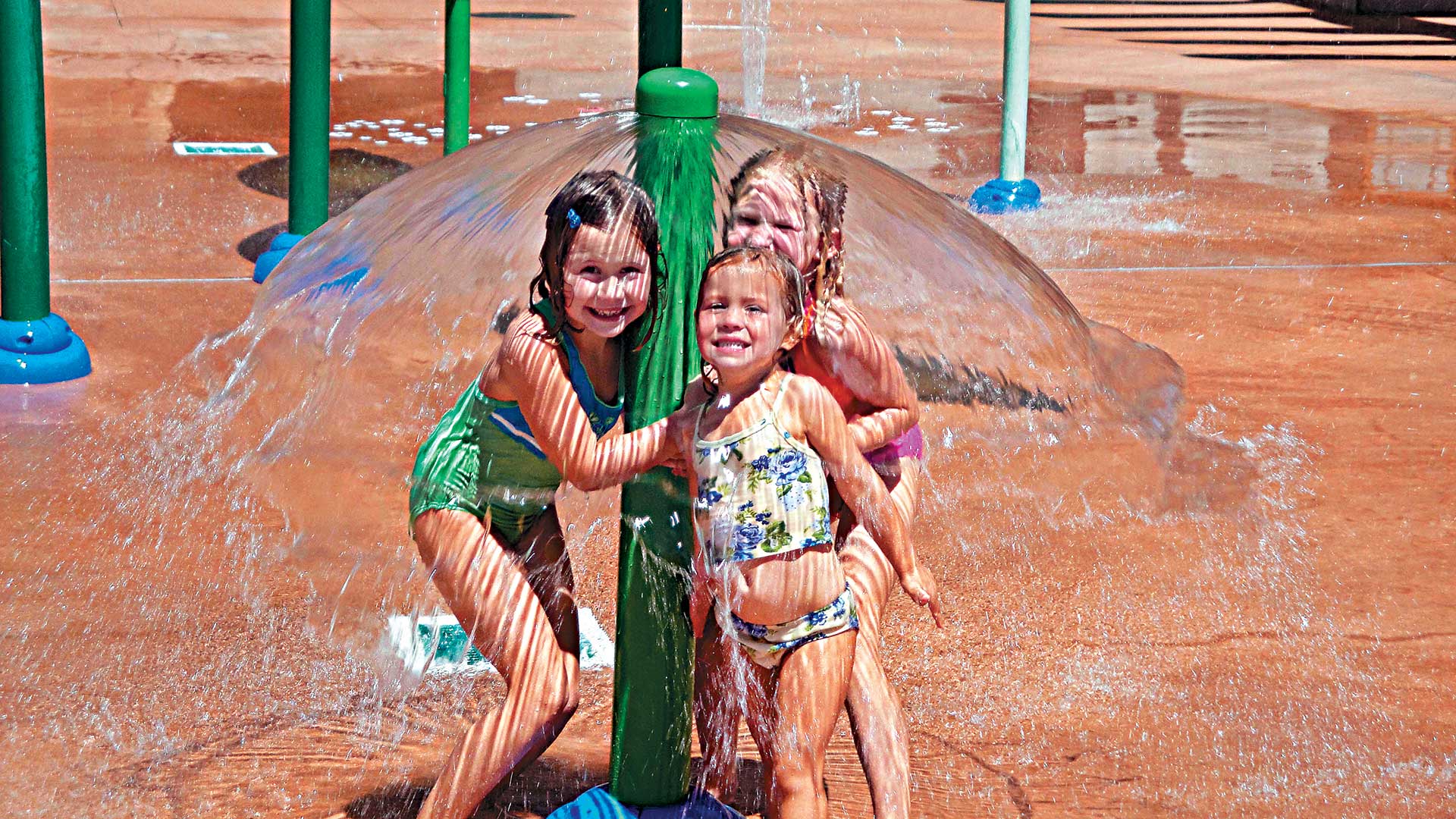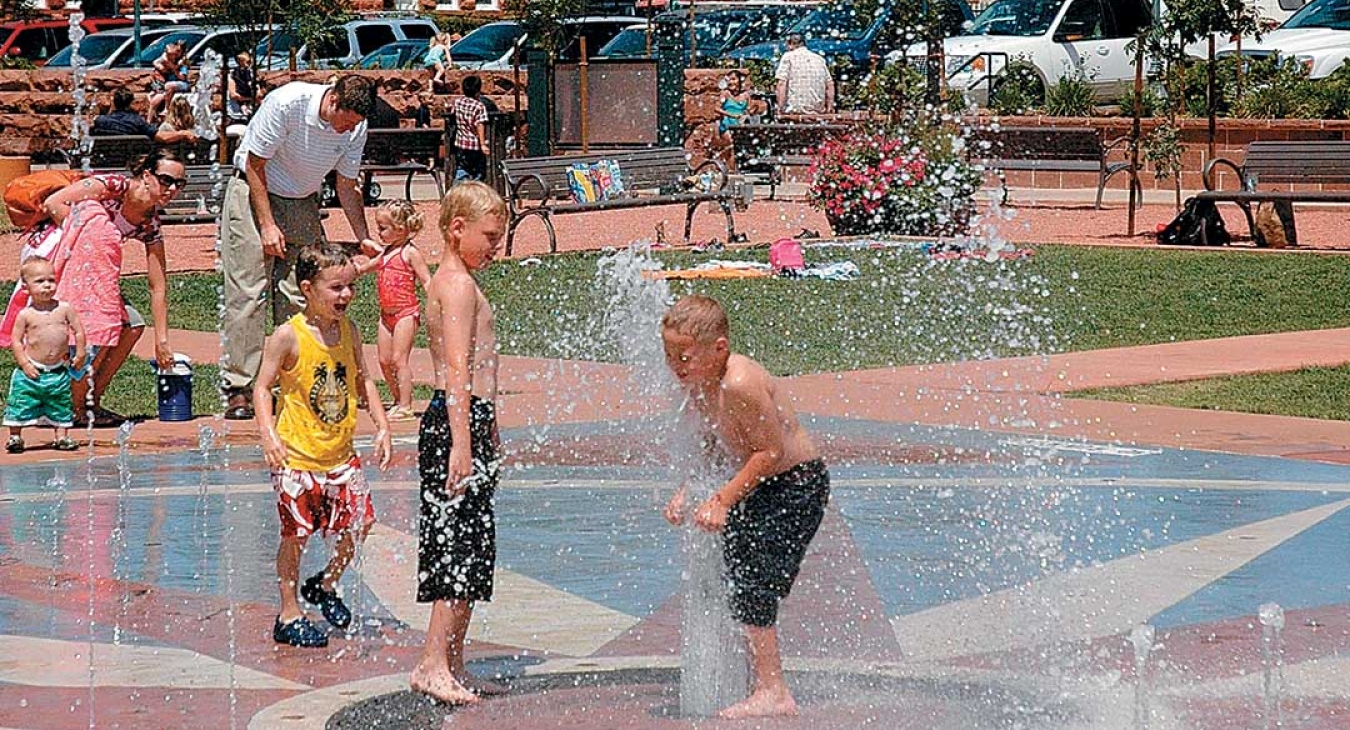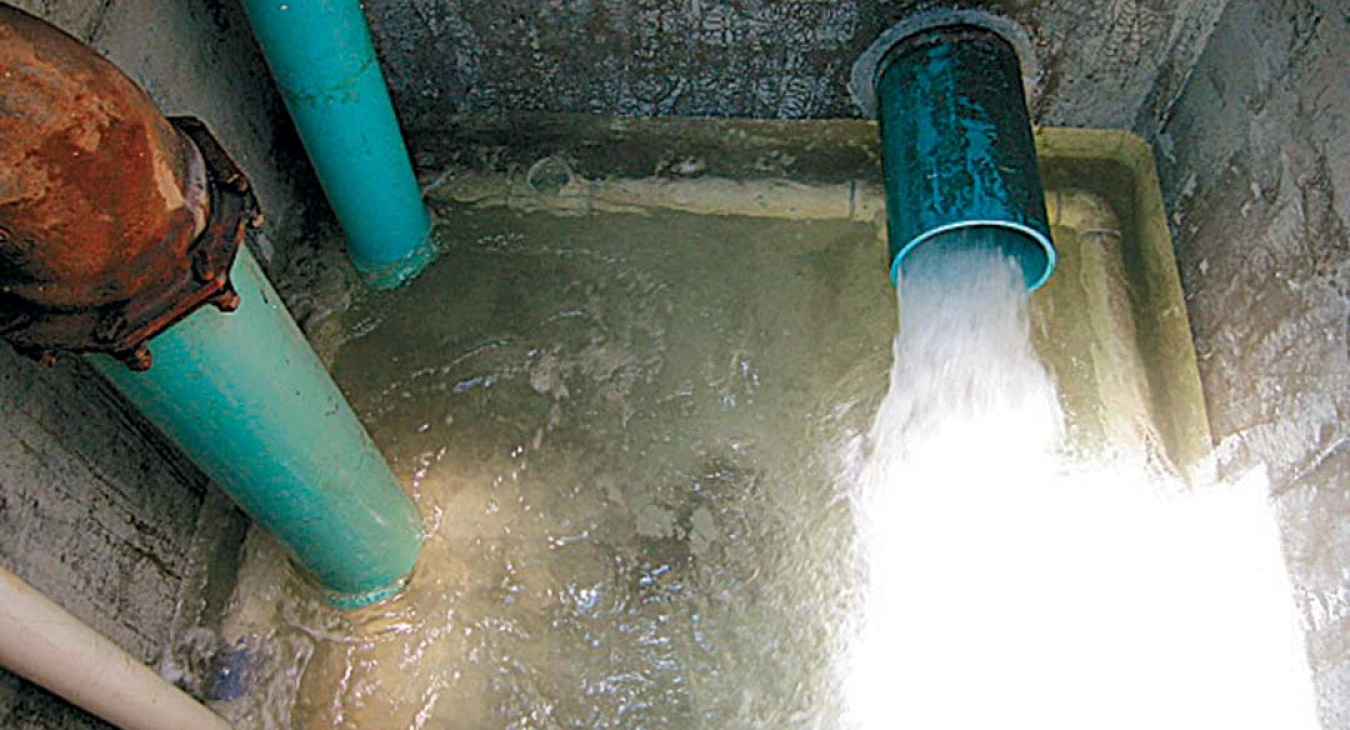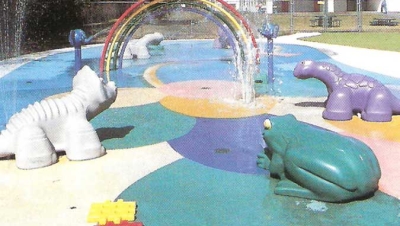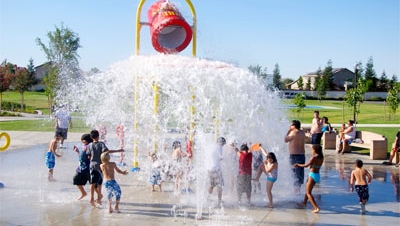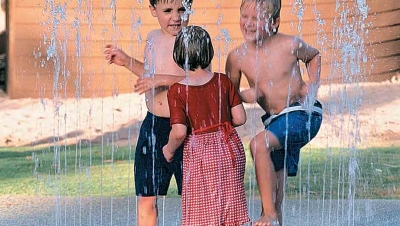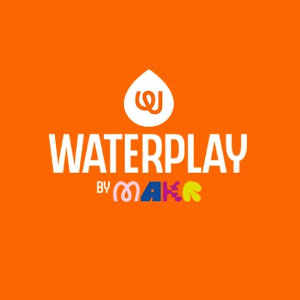Splash parks can be a huge source of entertainment for children all summer long but precautions need to be put in place so that dreaded RWIs don’t ruin the fun.
If there is a splash park in your town, you should.
The splash pad wave is here. Splash pads, sometimes called spray grounds, aquatic playgrounds, splash parks or interactive water features, are making a surge in communities nationwide as a part of a park (new or existing), an urban park or even part of a recreational facility.
In comparison to a swimming pool, these features are relatively inexpensive to install and operate, making them a good option that provides a fun, water-filled environment for communities that don’t have the means to install a swimming pool or don’t want the expense of maintaining one.
Although splash pads can be relatively inexpensive to install, if a good filtration system is not in place and a guest becomes ill from playing in your feature, the potential risk can outweigh any upfront savings. Ensuring guest safety should be the most important part of any splash pad design.
With the looming cloud of recreational water illnesses (RWIs) that surround just about every aquatic feature (interactive and non-interactive), ensuring that your filtration system is adequate to assist with the prevention of RWIs is imperative.
Splash Pad Circulation 101
To understand the risk of exposure to RWI contaminants, understanding of basic splash pad circulation systems and how users can be exposed is important. There are two basic types of circulation systems for these features: flow through (or single pass) and re-circulating (or double pass).
In the simplest terms, a flow through system utilizes potable water that is directly fed to the features at the splash pad and then the water drains directly to waste. These systems provide good prevention of RWIs. Because potable water is piped to the pad and comes directly out of the sprays/features, and drains directly to waste, it is not re-used and exposure to germs is very limited. Also, maintenance for these systems can be less than a re-circulation system. It’s important to note that RWIs exposure is very limited, but not eliminated.
Unfortunately, there are some drawbacks to this type of system as well. Depending on the size and number of nozzles at the splash pad, daily water consumption could be of concern. Many splash pad component manufacturers offer “low flow” nozzles that help offset the amount of water being sent down the drain daily, but disposal of waste water is also of concern.
Often times there are restrictions on how many gallons can be introduced into a community waste water system and in some areas, directly draining to sewer can be a costly connection. And let’s not forget the “big white elephant in the room”: using potable water once and sending it down the drain can be of concern to some environmentally concerned community members. Reclaiming the water for other uses (irrigation, providing water to another feature such as a pond, etc.) is also an option. However, there can be very strict requirements to do so. Water consumption, the possible restrictions on water usage, as well as requirements for disposal/reclamation of the water should be carefully researched.
It’s In The Tank
A re-circulation system also utilizes potable water; however, the water is held in a subterranean water tank (usually called a balancing tank or collection tank). From this tank the water is pumped out and fed to the splash pad features. The water then drains (usually by gravity) back to the tank. Simultaneously, water in the tank is also being pumped out (from a separate system), fed through a filter, heater (in some applications), treated with chemicals (usually chlorine and a pH stabilizer) and returned back to the tank, ultimately “cleaning” the water that is being supplied to the splash pad features.
Obviously, this can open the door to exposure to germs that cause RWIs. People walking on the splash pad with shoes, animals, water running off bodies, etc., are some ways that RWI germs can be introduced into the system by being washed into the drains of the splash pad and back to the collection tank. If the circulation system of the feature is not appropriately sized, installed incorrectly or not functioning properly, then the risk of exposure can be heightened.
Scared yet? Splash pads shouldn’t be a scary thing; they’re fun.
There are ways to help reduce the risk of exposure to RWI germs. For a long time, these types of features were unregulated by local health departments, and to this day, there are many states that still do not have regulations in place. Even with existing regulations, it may not be enough to prevent an RWI from occurring.
For Example…
The state of New York understands this all too well. In 2005 there was a cryptosporidium (crypto) outbreak of epic proportions. The exposure was pinpointed to a splash pad in Seneca Lake State Park. At the time, the splash pad’s filtration system was inadequate to kill the germ and was introduced to the guests of the splash pad through the spray nozzles.
Although the filtration system was functioning properly, the cryptosporidium germ is chlorine resistant and the splash pad guests were exposed. In order to help prevent future outbreaks, the state of New York worked with a manufacturer of an ultraviolet disinfection unit to write regulations that require all interactive water features built in the state of New York to install a supplemental ultraviolet sanitizing system in addition to the primary sanitizing system.
Ultraviolet sanitizing “deactivates” the crypto oocyst, not allowing it to propagate and infect, making it a very powerful defense against the crypto germ specifically. Other requirements were also implemented, including the requirement of signage that outlines inappropriate behaviors.
When the state of Texas had a similar outbreak in 2008, the state had no splash pad regulations in place. Since the outbreak, the state has implemented interactive water feature regulations and required all existing and new “public interactive water features” to comply.
Great, I have a splash pad. Now what do I do? What if my state doesn’t have regulations? How can I help prevent the spread of RWIs? All great questions.
- Do your research. Are there local codes/regulations in place? Are you currently meeting the requirements? Are there plans for implementing new regulations? What are they? What is the implementation time line? Are there water consumption restrictions? What about waste water requirements? A simple phone call to your local code officials can be very enlightening.
- Involve a professional. If you have an existing splash pad or are planning a new one, hiring an aquatic design firm is a great investment. Many firms understand the requirements of these features and they can evaluate your current system or design a new disinfection system that can help with the prevention of RWIs.
- Model your system after an “industry standard.” The CDC is a great resource and is currently working on a Model Aquatic Health Code that will provide valuable information to those states that currently do not have regulations in place. Additionally, looking at other state codes that have specific splash pad regulations such as New York, Texas and Utah can give insight on requirements that can help prevent illnesses.
- Talk to the manufacturer of your features. Regardless of whether you are installing a flow-through system or a re-circulating system, many manufacturers are well versed with the various required state regulations and can be very helpful.
- Provide signage. At the very least, provide guidelines for user behaviors. Drinking the water from the nozzles, changing diapers by the splash pad, sitting on the spray nozzles, etc., are all ways that RWIs can be introduced to the water. Education of guests to your feature and prevention of these types of behaviors can help reduce exposure. The CDC is a front runner in RWI prevention and has created “Six Steps for Healthy Swimming.” Posters and brochures are available for download at www.cdc.gov.
- Don’t wait to look at your existing system. If your state doesn’t regulate splash pads now, don’t worry, they possibly could, eventually. Besides, it’s the right thing to do to help prevent outbreaks and keep your community safe.
Even if your splash pad has a flow-through system, there are steps you can take to help prevent the introduction and spread of RWIs. Following many, if not all, of the same steps listed above will certainly help. But you should also keep nozzles and features clean to help prevent exposure. Other precautions would be to post signs and/or have an attendant make sure the guests do not drink the water from any feature. Even though it is potable water, the residual germs left from foot traffic or dirty little hands can be left on features and transmitted in small amounts through the water discharging through the features.
Community education about appropriate behavior is very important, regardless of what type of system is used.
Splash pads can be a very beautiful, fun attraction for any community. Ensuring you have a good RWI prevention plan in place is imperative for years of safe, splashing enjoyment.
Photos courtesy of Tom Anderson Water Design

